The Everglades sprawls across southern Florida like nature’s own waterpark, except here the slides are winding mangrove tunnels and the attractions are herons, manatees, and the occasional alligator sunbathing on a mudbank. This massive wetland ecosystem offers some of the most unique paddling experiences in North America, where saltwater meets freshwater and creates a paradise for kayakers seeking adventure beyond the usual lake loop. Whether you’re gliding through cathedral-like mangrove tunnels or paddling across vast sawgrass prairies, each route tells a different story about this remarkable wilderness.
Here is a list of 16 spectacular kayak routes that showcase the best of the Everglades’ mangrove forests and waterways. From beginner-friendly creeks to challenging backcountry trails, these routes offer something for every paddler willing to explore America’s River of Grass.
Nine Mile Pond
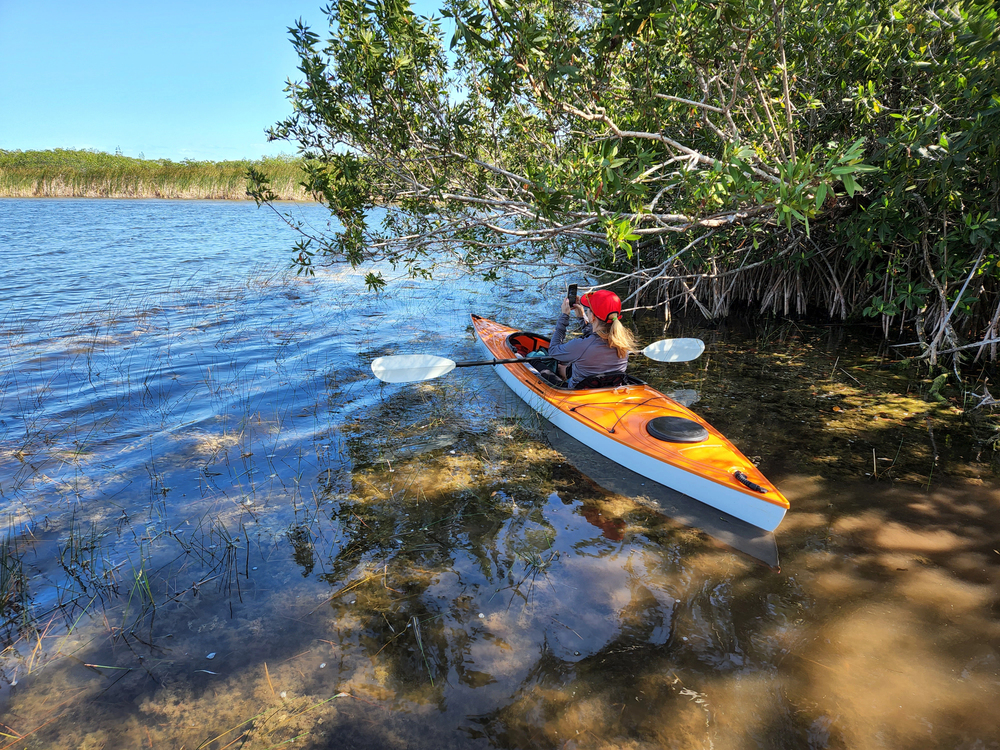
This classic loop trail near Flamingo takes you through a maze of mangrove islands that feels like nature’s own hedge maze. The 5.2-mile route winds through narrow channels where the mangroves arch overhead, creating green tunnels that filter the sunlight into dancing patterns on the water. Most paddlers complete this route in about three hours, though you’ll want to budget extra time for photography and wildlife watching. The best part comes halfway through when the trail opens into wider ponds where wading birds gather in impressive numbers during the dry season.
Hell’s Bay Canoe Trail
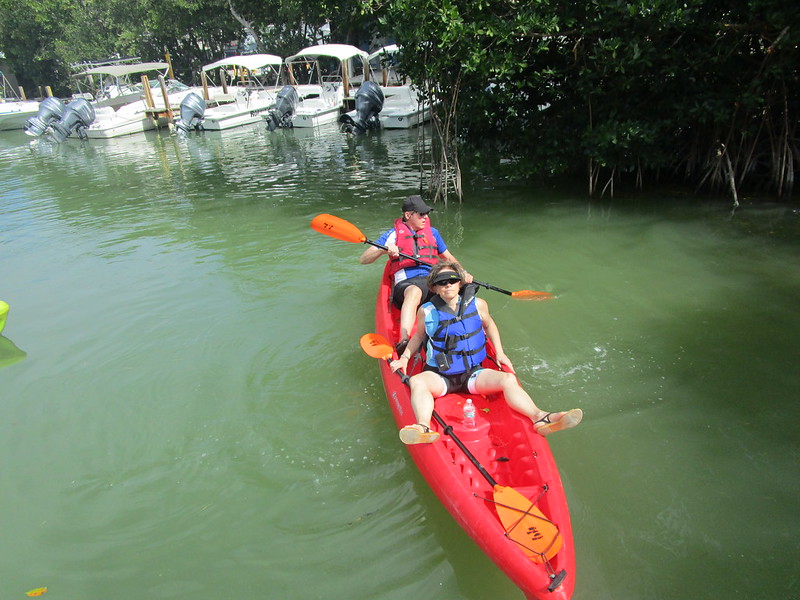
Don’t let the name scare you off — this backcountry trail earned its moniker because it’s ‘hell to get into and hell to get out of,’ thanks to its twisting channels. The full trail stretches about 8 miles one way, winding through some of the most pristine mangrove wilderness in the park. You’ll paddle through tunnels so narrow that your paddle blades brush the prop roots on both sides, while fiddler crabs scurry up the trunks as you pass. The trail connects several small bays and camping platforms (called chickees), making it perfect for an overnight adventure if you’re feeling ambitious.
Turner River
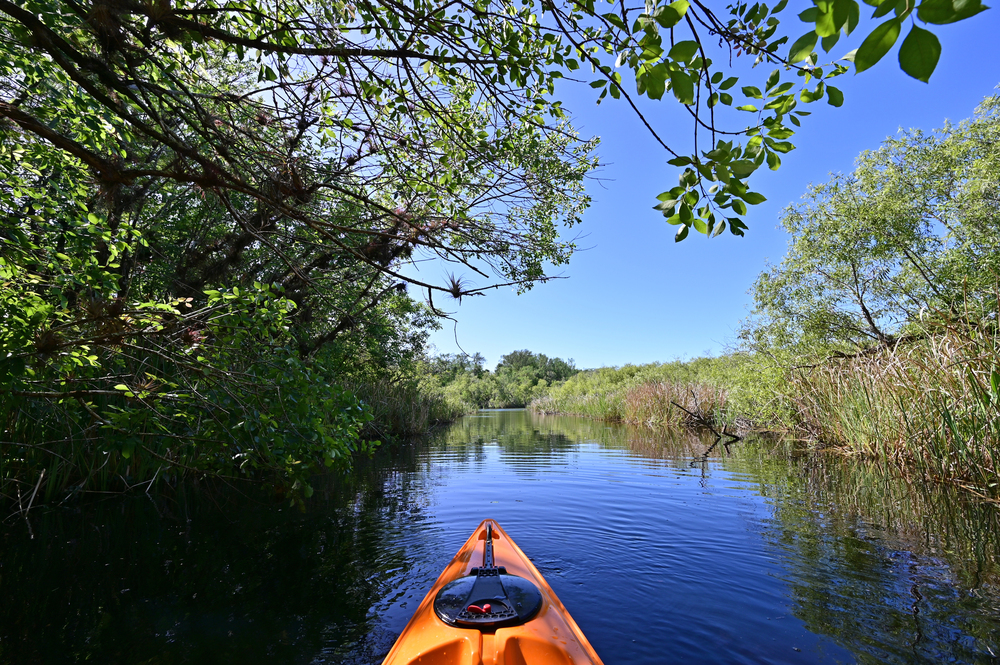
Starting from the Tamiami Trail, Turner River offers one of the most accessible yet wild paddling experiences in the Everglades. The 10-mile paddle to Chokoloskee Bay takes you from freshwater marshes through brackish mangrove forests, showcasing the full transition of Everglades ecosystems. Alligators are practically guaranteed sightings here, especially in the upper stretches where they bask on the banks like prehistoric sunbathers. The current helps push you along toward the Gulf, making this more of a lazy river experience than a workout.
Halfway Creek
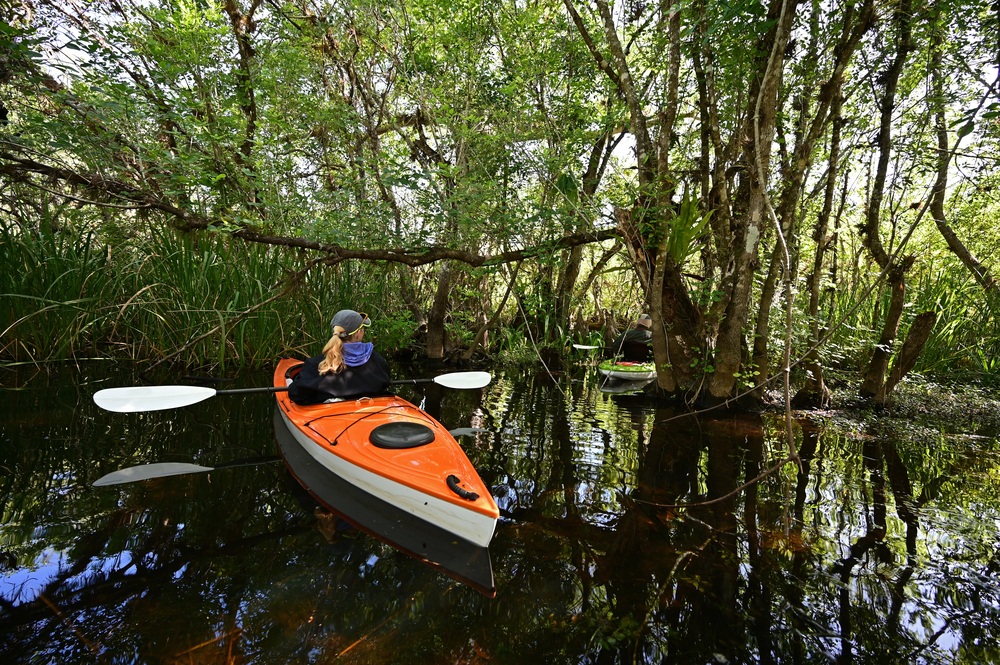
DepositPhotos
This hidden gem connects the Everglades City area to Chokoloskee Bay through a winding mangrove tunnel that feels like paddling through Middle Earth. The 7-mile route stays narrow for most of its length, with mangroves creating a canopy so dense that even midday feels like twilight. You’ll often spot juvenile tarpon rolling in the deeper sections, their silver sides flashing like underwater lightning. The creek eventually opens into the bay, where dolphins frequently patrol the grass flats looking for mullet.
West Lake
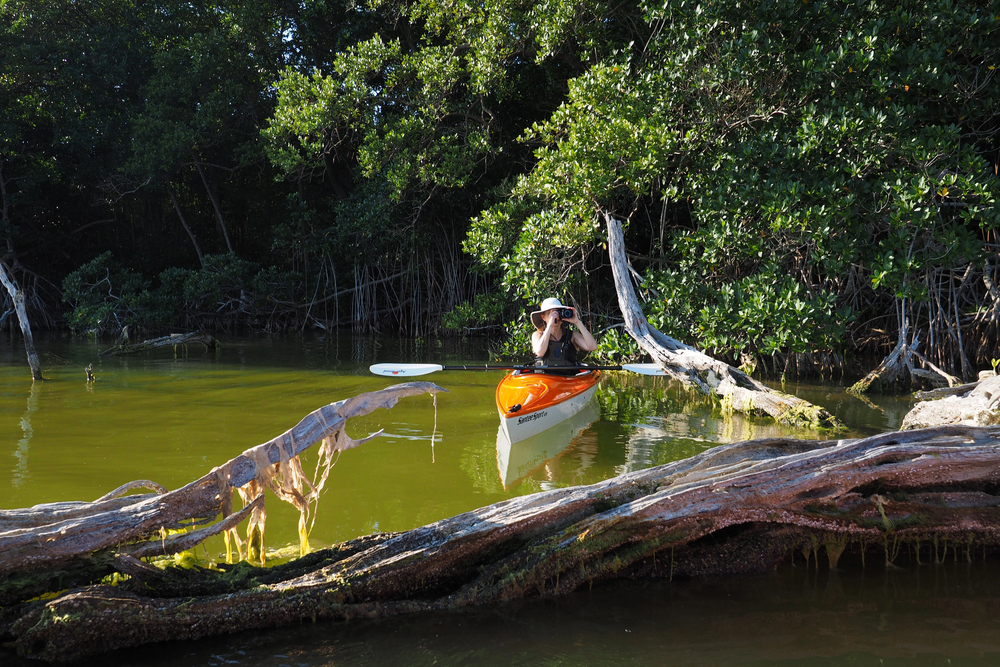
— Photo by fblanco7305
Located near the park’s southern entrance, West Lake offers several interconnected trails totaling about 8 miles of paddling options. The main attraction here is the massive lake itself, surrounded by the largest contiguous stand of mangroves in North America. On calm mornings, the lake becomes a perfect mirror, doubling the already impressive landscape. The mangrove tunnels leading off the lake feel like secret passages, each one potentially holding a roosting night heron or a family of raccoons foraging in the shallows.
Bear Lake Canoe Trail
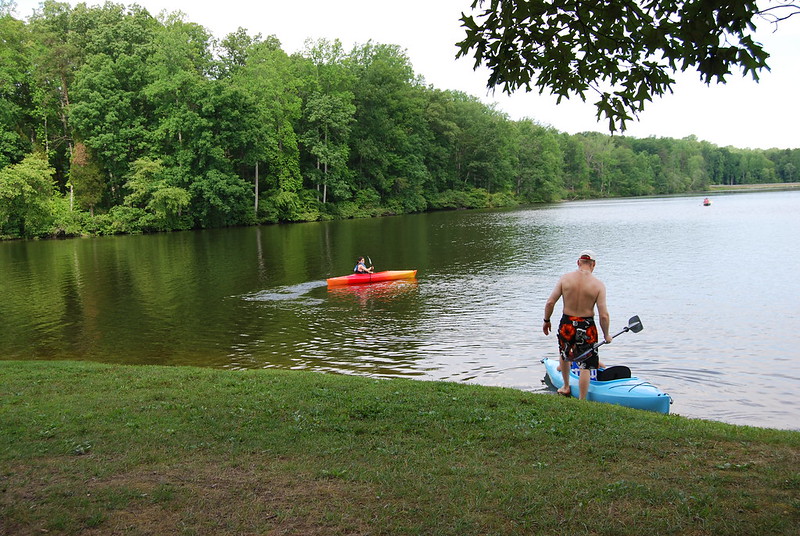
This remote trail in the Cape Sable region requires more planning but rewards adventurous paddlers with true wilderness solitude. The 11.5-mile trail crosses several lakes connected by narrow creeks, creating a diverse paddling experience that changes with each section. During winter months, you might spot American crocodiles here — one of the few places in the U.S. where these prehistoric creatures still thrive. The trail’s remoteness means you’ll likely have it all to yourself, save for the occasional osprey diving for fish.
Mud Lake Loop
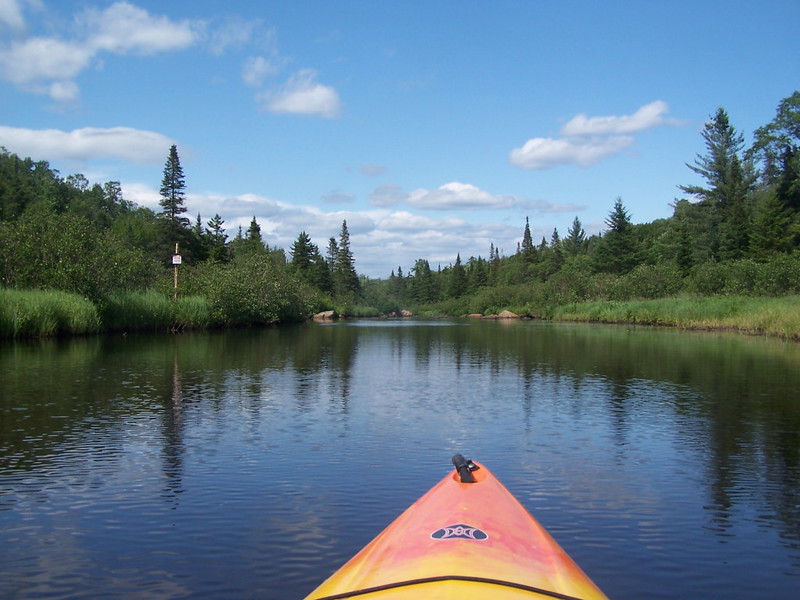
Despite its unglamorous name, Mud Lake Loop offers one of the best intermediate paddling experiences near Flamingo. The 6.8-mile trail combines open water paddling across Coot Bay with intimate mangrove tunnels that test your maneuvering skills. The ‘mud’ in question actually creates excellent habitat for wading birds, and the shallow flats often teem with mullet schools that explode from the water as you approach. Time your paddle for high tide to avoid getting stuck in the notorious mud flats that give the lake its name.
Noble Hammock Canoe Trail
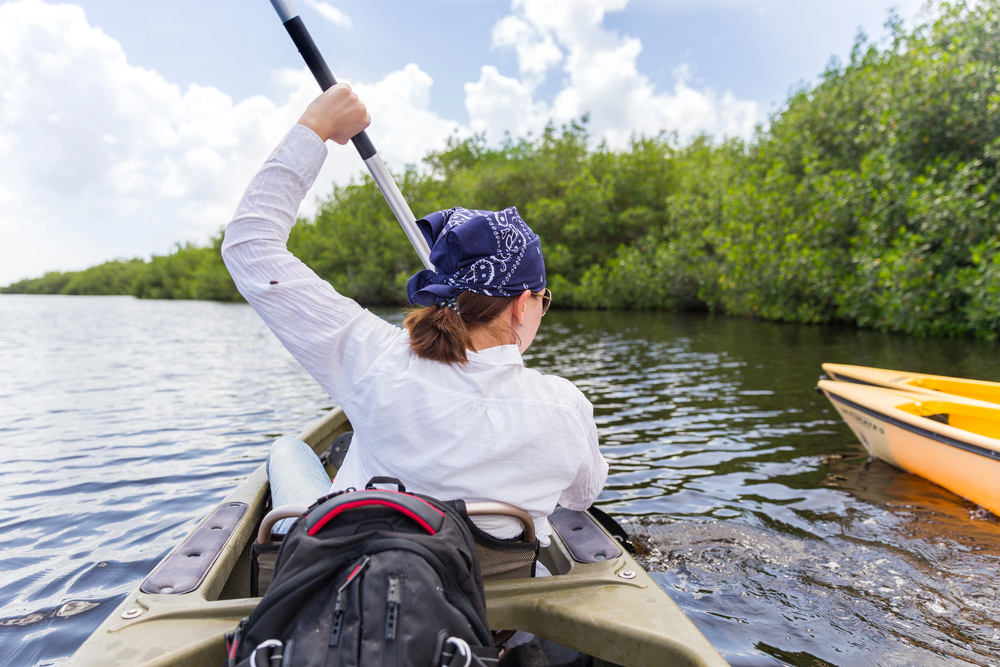
This lesser-known trail near Big Cypress offers a different perspective on Everglades paddling, taking you through a freshwater marsh dotted with tree islands. The 2-mile loop might be short, but it packs in plenty of wildlife viewing opportunities, especially during the dry season when animals concentrate around remaining water sources. Red-shouldered hawks often perch in the scattered trees, while purple gallinules step delicately across floating vegetation. The trail’s short length makes it perfect for families or anyone wanting a taste of backcountry paddling without committing to a full day.
Sandfly Island Route
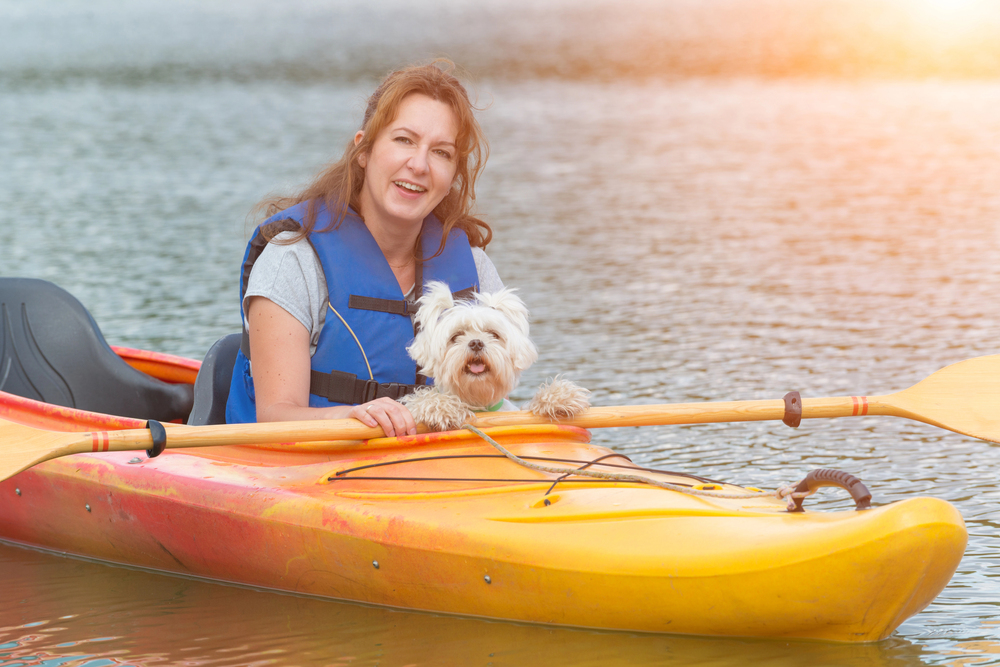
Launching from Chokoloskee, this route takes you through the Ten Thousand Islands’ maze of mangrove keys to the shell mounds of Sandfly Island. The 4-mile round trip offers a mix of open water and protected channels, with strong tidal currents that can either help or hinder your progress. The destination itself provides a fascinating glimpse into pre-Columbian life, with ancient shell mounds built by the Calusa people still visible along the nature trail. Time your visit for low tide to explore the exposed oyster bars where countless birds gather to feed.
Lostmans Creek
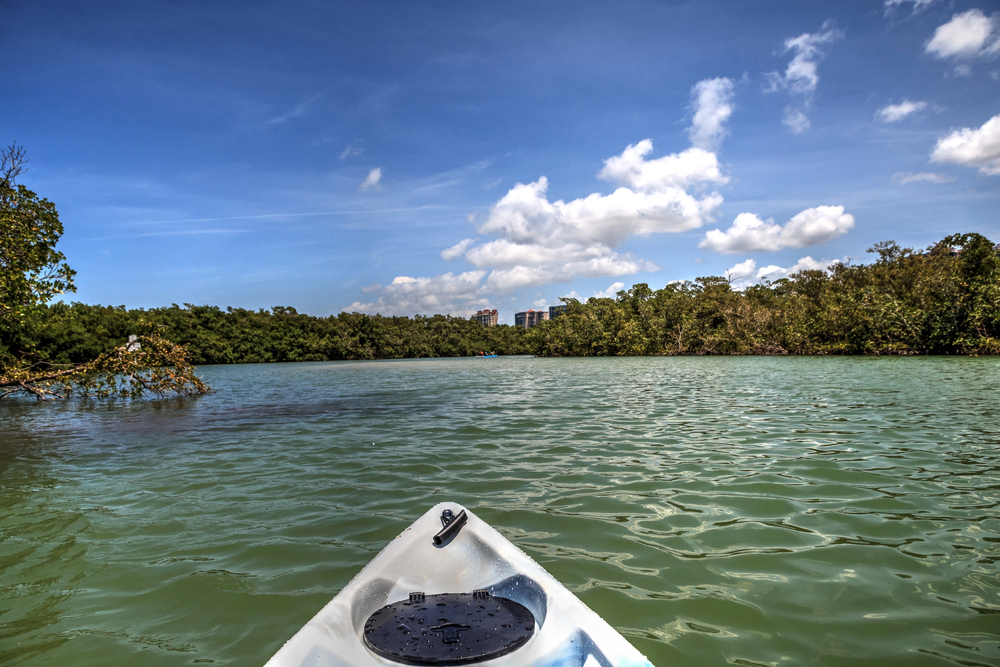
This backcountry paddling trail stretches nearly 15 miles from the Gulf Coast to the interior marshes, though most paddlers tackle just sections of it. The lower portion near the Gulf features wide channels lined with towering mangroves, while the upper reaches narrow into intimate corridors barely wide enough for a kayak. Tarpon and snook patrol these waters year-round, often startling paddlers with explosive strikes on baitfish. The creek’s multiple camping platforms make it ideal for multi-day expeditions into the heart of the wilderness.
East River Route

Connecting Flamingo to the Florida Bay backcountry, the East River provides a highway for paddlers seeking to explore the transition zone between bay and swamp. The 8-mile route features some of the park’s most reliable manatee sightings, especially during cooler months when these gentle giants seek the warmer waters near Flamingo. The river’s width varies dramatically, from expansive areas where you can paddle side-by-side to bottlenecks where single-file is mandatory. Sunrise paddles here often feel magical, with mist rising off the water and birds beginning their morning chorus.
Plate Creek Loop
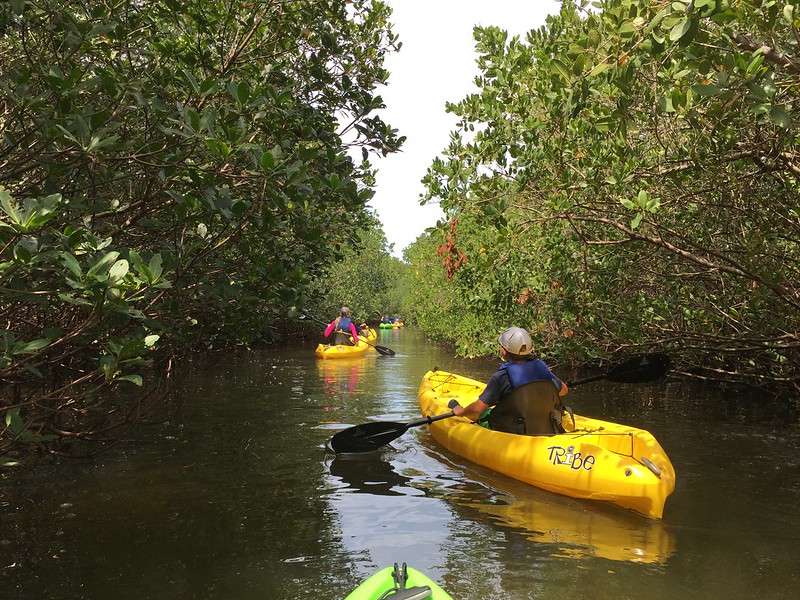
This moderate 7-mile loop near Flamingo combines several habitats in one paddle, taking you from mangrove-lined creeks to open bays and back. The route passes through areas where freshwater from the Everglades meets saltwater from Florida Bay, creating brackish conditions that support incredible biodiversity. Roseate spoonbills often feed in the shallow sections, their pink plumage standing out against the green mangroves like tropical flowers. The loop configuration means you’ll see different scenery throughout your paddle rather than retracing your path.
Harney River
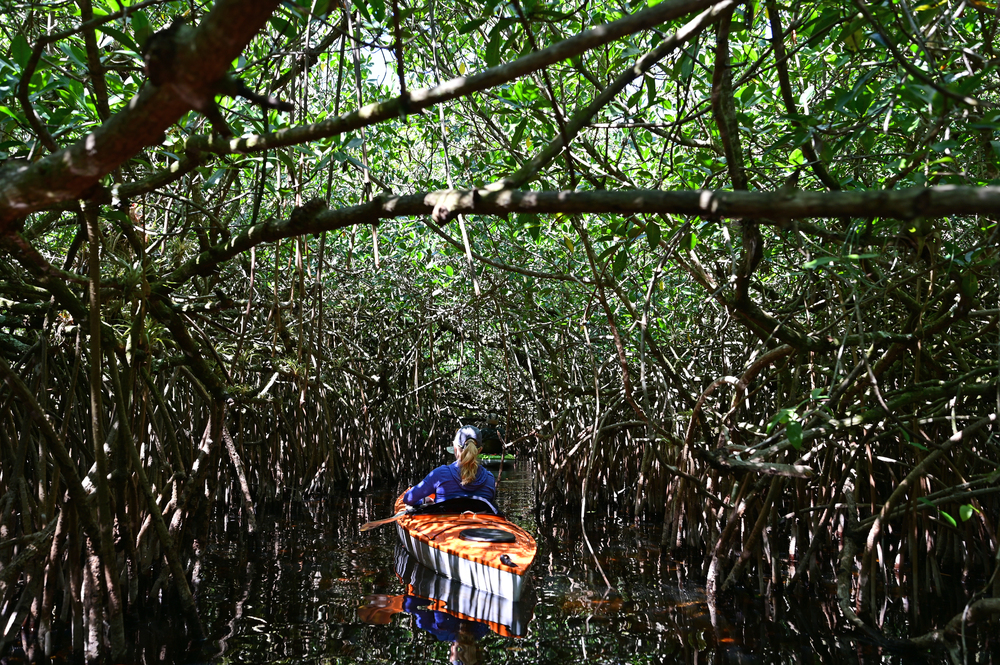
The Harney River offers one of the most scenic routes from the freshwater Everglades to the Gulf of Mexico, covering about 15 miles of diverse paddling. Starting from the Tamiami Trail, you’ll paddle through sawgrass marshes before entering the mangrove forests that gradually grow denser as you approach the coast. The river’s gentle current assists your downstream journey, though you’ll need to arrange transportation back unless you’re up for the upstream challenge. Wildlife photographers love this route for its reliable alligator, bird, and even occasional (though rare) Florida panther sightings along the banks.
Roberts River
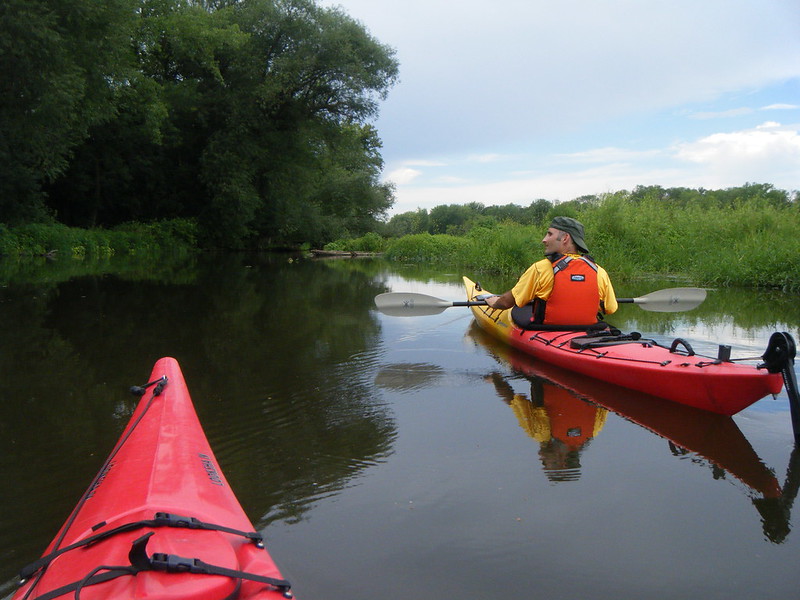
Less traveled than its neighbors, Roberts River provides a peaceful alternative for paddlers seeking solitude. The 12-mile route to the Gulf winds through pristine mangrove wilderness where the only sounds are paddle strokes and bird calls. The upper sections feature some of the area’s most impressive spider lily displays during blooming season, their white flowers creating natural bouquets along the banks. As you near the Gulf, the river widens and splits into multiple channels, offering choices for exploration or shortcuts back to civilization.
Buttonwood Canal
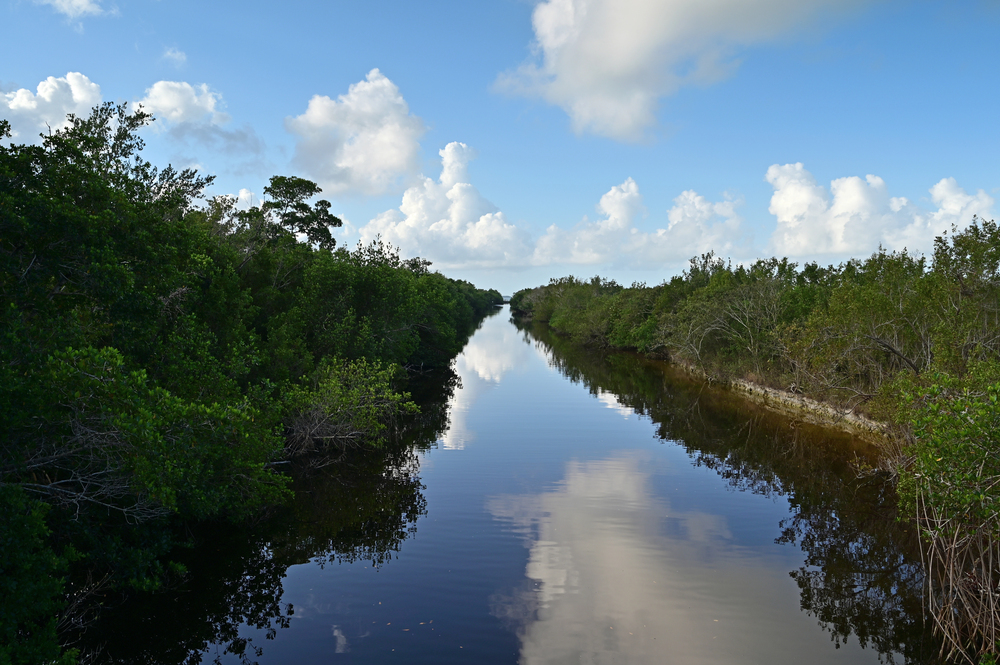
This man-made canal might lack the natural beauty of winding creeks, but it serves as a vital connector between Flamingo and Coot Bay. The 3-mile paddle offers surprisingly good wildlife viewing, as animals use the canal as a travel corridor between habitats. Early morning paddles often encounter river otters playing in the calm waters, while alligators patrol the edges looking for unwary fish. The straight shot makes for easy navigation, perfect for beginners or anyone wanting a leisurely paddle without the challenge of twisting mangrove tunnels.
Joe River
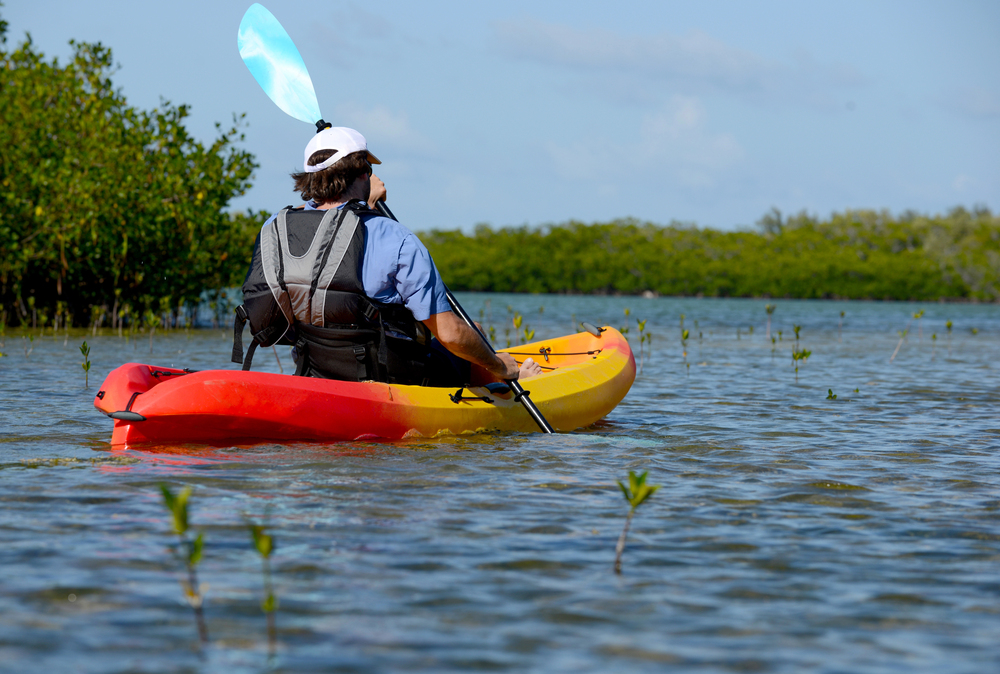
The Joe River route takes paddlers through some of the most remote and pristine mangrove habitat in the southern Everglades. This 10-mile paddle from Flamingo toward Florida Bay passes through areas where saltwater crocodiles still maintain breeding populations alongside their alligator cousins. The river’s multiple branches create opportunities for exploration, though GPS navigation is essential in this maze of look-alike channels. Lucky paddlers might spot the endangered American crocodile basking on mudbanks, distinguishing them from alligators by their lighter color and more pointed snout.
Where Ancient Waterways Meet Modern Adventures
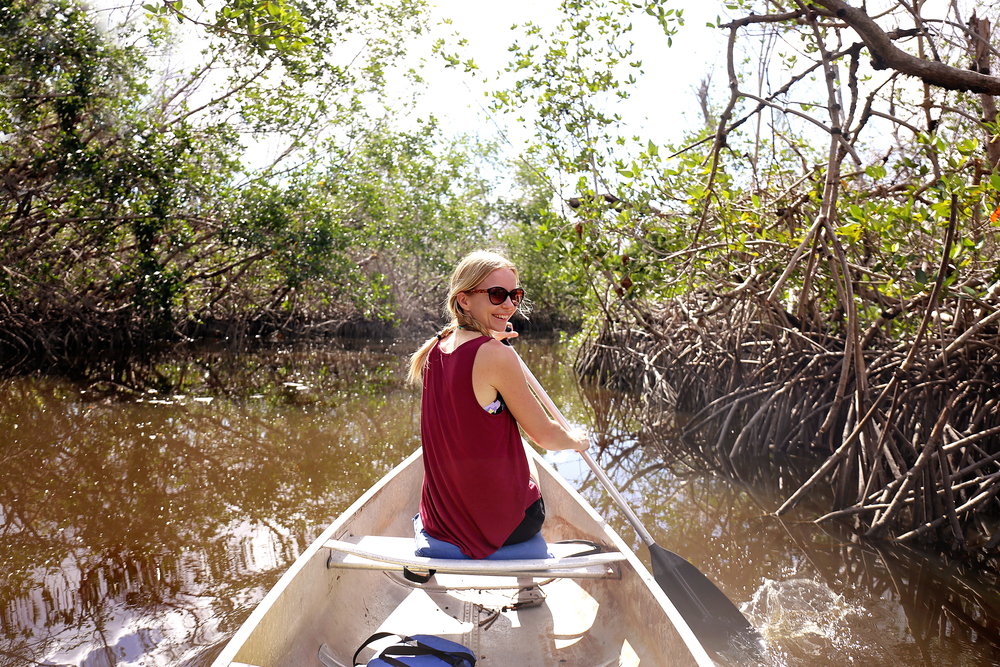
These 16 routes represent just a fraction of the paddling possibilities in the Everglades, a place where time seems to slow down and every bend might reveal a prehistoric-looking bird or a manatee’s gentle wake. The mangroves that line these waterways have stood guard for centuries, their tangled roots creating nurseries for countless species while protecting the mainland from storms. Today’s paddlers follow paths used by the Calusa and Seminole peoples, experiencing the same sense of wonder at this watery wilderness. Each trip through these green tunnels reminds us that some of Earth’s greatest adventures don’t require climbing mountains or crossing oceans — sometimes they’re found drifting quietly through the mangroves, paddle in hand, surrounded by nothing but nature’s own architecture.
More from Travel Pug

- 20 Best Beach Towns in the Carolinas
- 13 Destinations Where Tourists Regularly Regret Their Trip
- 20 Things You Actually Get in First Class
- 20 Small Airports With Aviation Museums
- 20 Places in the U.S. That Are Perfect for a Reset Trip
Like Travel Pug’s content? Follow us on MSN.
